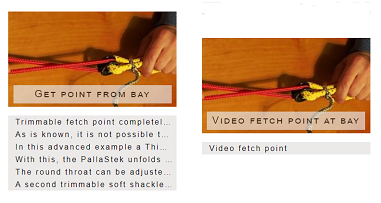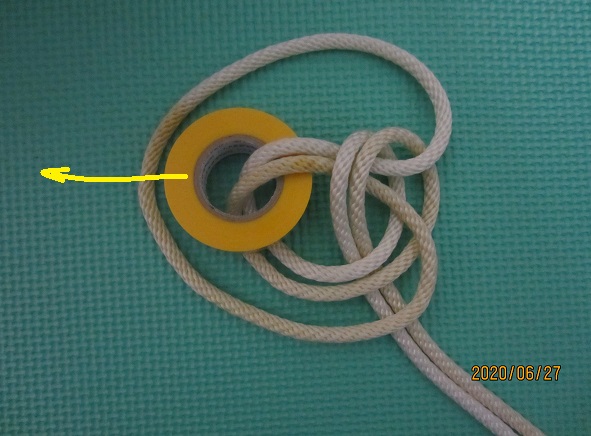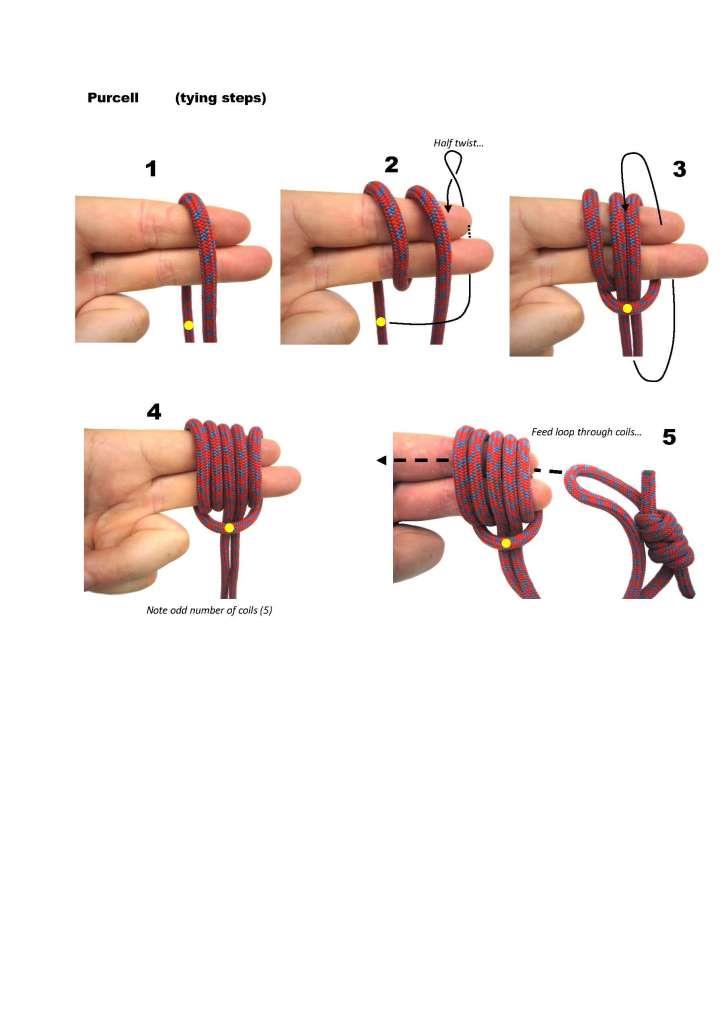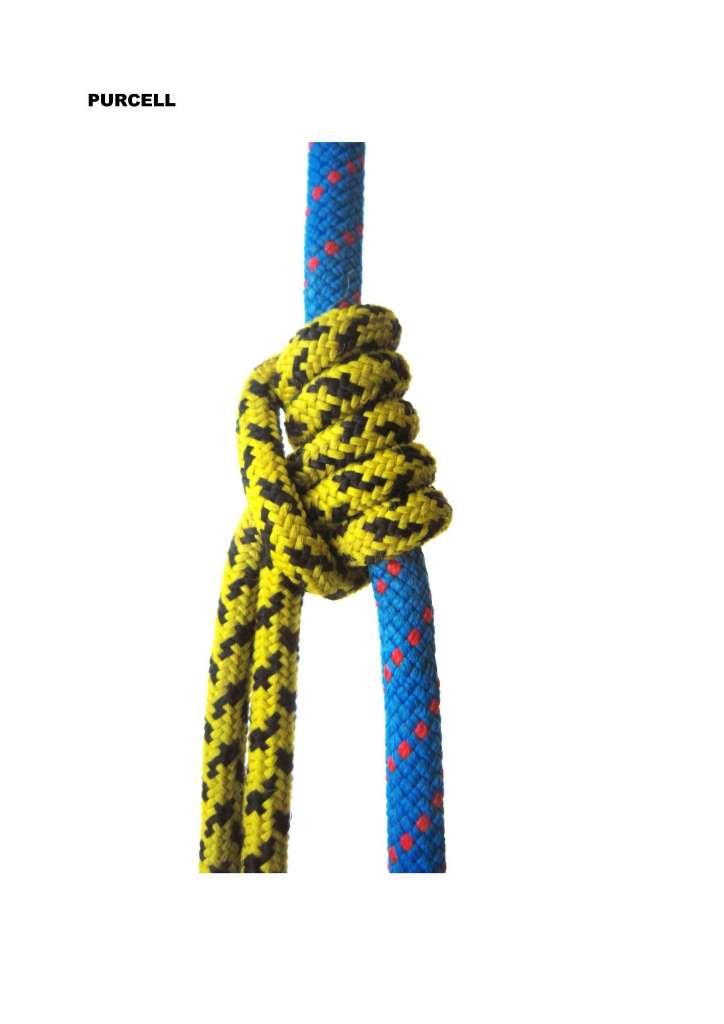rope clamp, friction hitch from bight, named pallastek
Dear Reader
My Name is Bernd living in Germany.
History:
I use many years the cow-hitch and bend it from a bight like kite-surfer to with. By the time see and learn the prusik
and was impressed. Once a time i thought whats happen bending a non-symmetric prusik
and was i get was this stich (see picture). I use it six jears now and does not find it as well known communicated.
Its like a half prusik combined with a half cow-stich. You lay/bend it from a bight (or in a endless loop like maritim D-loops)
- no endparts where needed -
with one finger a double turn and with the thumb only one turn an dress it an store it on the thumb (with execises in less than 2 seconds).
After that you shift it over one or more ropes/cables and pull the two parts simultanously apart.
I tye both Endparts together with overhand knot to get symmetric tension on both endparts- but its not nessesary needed.
Normaly it dress itself like a prusik. In this view its a 3/4 Prusik.
Searching in Knot compendians i find the Magnum Stitch (ABOK #1736 )
wich is in the first view nearly identic
But it has other physics (means in Form, Power and pull direction angle) and useability and applications.
versus Form:
Magnus_hitch use one rope/line as staying end (versus double lines from a bight)
Magnus_hitch get its friction pull the staying line in 90 degree
(versus <= 90 to = 90 degree by pull both lines in direction to the one tourn likely a curryclamp or swabish_hitch )
Magnus_hitch use one tension part and one loose part (versus two tension-parts like prusik )
Magnus_hitch has eventually need to secure the loose part (versus havn’t a loose part )
Magnus_hitch can only carry a load for one line. (versus two thinner lines can be thinner in cramped conditions but
by more securest stronger friction )
Magnus_hitch is disable to form with a endless D-loop rope cause you can’t get a knot in a loop
Magnus_hitch is more complicated and needs more Time and Attention to build (versus forms it nearly itself like a prusik)
versus Application:
Best application is to put the Stek over the own endparts give two adjustable loops
can get more than one Stitch in a endless loop and can quickly bridging or enforce a damaged rope part
can carry bundles of things is self pinching and not self-opened (some bindings was in the same condition after a couple of jears)
knot the free ends together to have a balanced tension point or a handy ?bight to carry or take it on a wall mounted hook.
easy to tighten it by move the free parts apart or if the end together tyed you pull simply on both parts
Its like a instant Stich you can use everywhere.
versus build:
you can use but not need a rope end part
you normaly take the middle a bight of a rope or bundle
you can build it in air with fingers and motions or
put three loops on a table and pick the rings with one finger like a asynchron Prusik
with exercise build in less then 3 seconds, normaly needs about 10 sec
See my Website with short videos
http://www.pallastek.de



